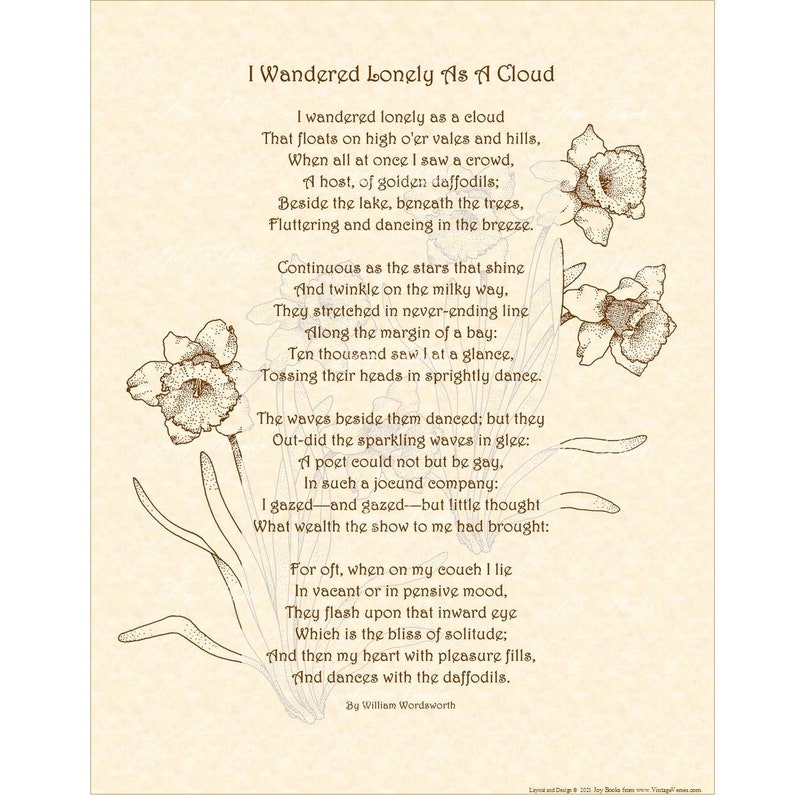
- #WILLIAM WORDSWORTH I WONDERED LONELY AS A CLOUD TRIAL#
- #WILLIAM WORDSWORTH I WONDERED LONELY AS A CLOUD SERIES#
The words, the figures, the metres, and the rhyme scheme together constitute a joyous tone, befitting the happy communion. As a result, communion between the speaker and the daffodils is possible. Thus, the figures of speech have been very carefully used to suggest that the daffodils are large in number, they are living creatures, and they are happy and capable of giving company to man. The other simile in the poem "as the stars" has been used to imply both brightness and a huge number of daffodils.

It is one of his most popular, and was inspired. The word "company" has been used very significantly, in the same way, to transfer the life of human beings to the daffodils. I Wandered Lonely as a Cloud (also commonly known as Daffodils) is a lyric poem by William Wordsworth. The words "dancing" and "dance" are also used to imply the jovial and living nature of the daffodils. Similarly "a crowd" is a personification in which the qualities of a crowd have been transferred to the flowers indicating their huge number and their lively nature.
#WILLIAM WORDSWORTH I WONDERED LONELY AS A CLOUD TRIAL#
The I-speaker has been compared to a piece of hovering cloud suggesting a passive mood and an empty mind. I Wandered Lonely as a Cloud by William Wordsworth Start Free Trial Summary Themes Questions & Answers Analysis Quotes Lesson Plans What is the tone of I Wandered Lonely as a Cloud by William.
#WILLIAM WORDSWORTH I WONDERED LONELY AS A CLOUD SERIES#
The poet here uses several figures of speech to create the suitable atmosphere and mood required for establishing a communion between the speaker and the daffodils symbolising nature. I Wandered Lonely as a Cloud Analysis I Wandered Lonely as a Cloud or The Daffodils was composed by Wordsworth at Town-end, Grasmere, in 1804, and published in 1807 in the series Moods of My Own Mind.It is one of the finest and most popular poems of Wordsworth.

There is no doubt that the poem springs from the personal experience of the poet but his first-person speaker presents the truth about na- nature's influence on man. The last eight lines have been used to describe the influence of that happy sight on the mind of the speaker, a man who discovers a communion between himself and nature. The first fourteen lines have been used to describe the daffodils and create their ecstatic mood. The tetrameter verse lines ensure the smooth and spontaneous movement required for the creation of such a jovial atmosphere. They flutter, dance, and toss in the pleasant wind they are "gay" "jocund" and gleeful. The daffodils are of "golden" colour and they shine and sparkle. The poet has very carefully built up a happy and joyous atmosphere by selecting suitable objects, colours and moods.

The couplet at the end of each stanza enhances spontaneity. Each of the stanzas consists of six verse lines rhyming ababcc. The poem is, therefore, about the influence of nature on the human mind.


 0 kommentar(er)
0 kommentar(er)
